What To Know About Visiting Copenhagen and Denmark
Planning a trip to Denmark? Here’s what we’ve learned about Danish culture, food, cost of living, language, and more from visiting our Danish friends. We also highlight where to stay in and top sights to see in Copenhagen, Denmark.
Updated: Summer 2020 with help from Derek Hartman of Robe Trotting. Originally published: August 2015.
Disclosure: This post contains affiliate links. If you book through one of our links, we may receive a small commission, at no additional cost to you.
Table of Contents
Visiting Denmark
At the end of our Europe trip in 2015, we spent two weeks in Denmark. To be honest, it wasn’t a country that was particularly high on our “must see” list before we went, but we have always enjoyed seeing new places no matter what. When things fell into place through a personal connection in Copenhagen, we decided to add Denmark to the end of our trip. We’re so glad we did.
We were first hosted by a young family we knew, just outside of Copenhagen, and then they connected us to another family that had moved out to a farmhouse on the island of Fyn (sounds like “few” with an “n”). The first family was Danish-American, the second Danish-Indian.
Both graciously helped us learn about Danish food, culture, politics, and way of life. In exchange for this priceless experience, we offered a helping hand around their homes (mostly painting).
We realized upon arrival, that we actually knew very little about Denmark. There was a vague recollection that it was ranked one of the happiest countries – or was it the most depressed? (Actually, it’s both.) And we had an inkling that they had exceptional social services. Also, we expected to see a lot of blond people speaking an incomprehensible language. Beyond that, our awareness of Danish life was sadly very limited.
So we thought we’d share a bit about what we learned about Denmark through our hospitable friends.
Food in Denmark
The Danish like their meat, especially pork. For special occasions, many will prepare pork in a special way that makes the skin salty and brittle – called flæskesteg (pronounced something like “FLESS guh sty“).
Other typical foods include open-faced sandwiches on rye bread.
And you’ll find a fair number of hot dog vendors on the streets of Copenhagen (we were advised to order a red hot dog with everything on it – mustard, mayo, pickles, fried onion – and it was delicious!)
The Danish are also known for their pastries, and as a pastry connoisseur, I can attest that they are wonderful. According to our friends, organic food has become more in demand in Denmark.

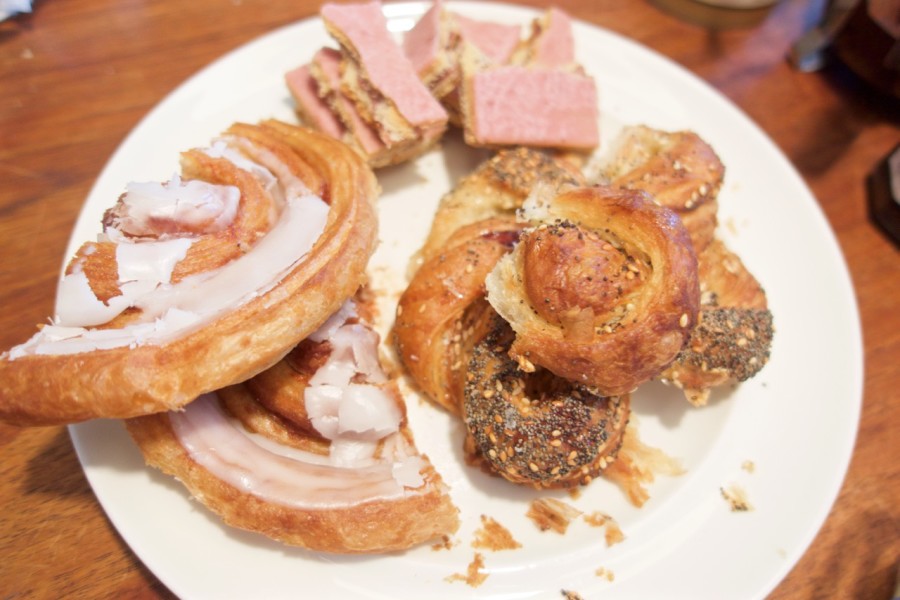
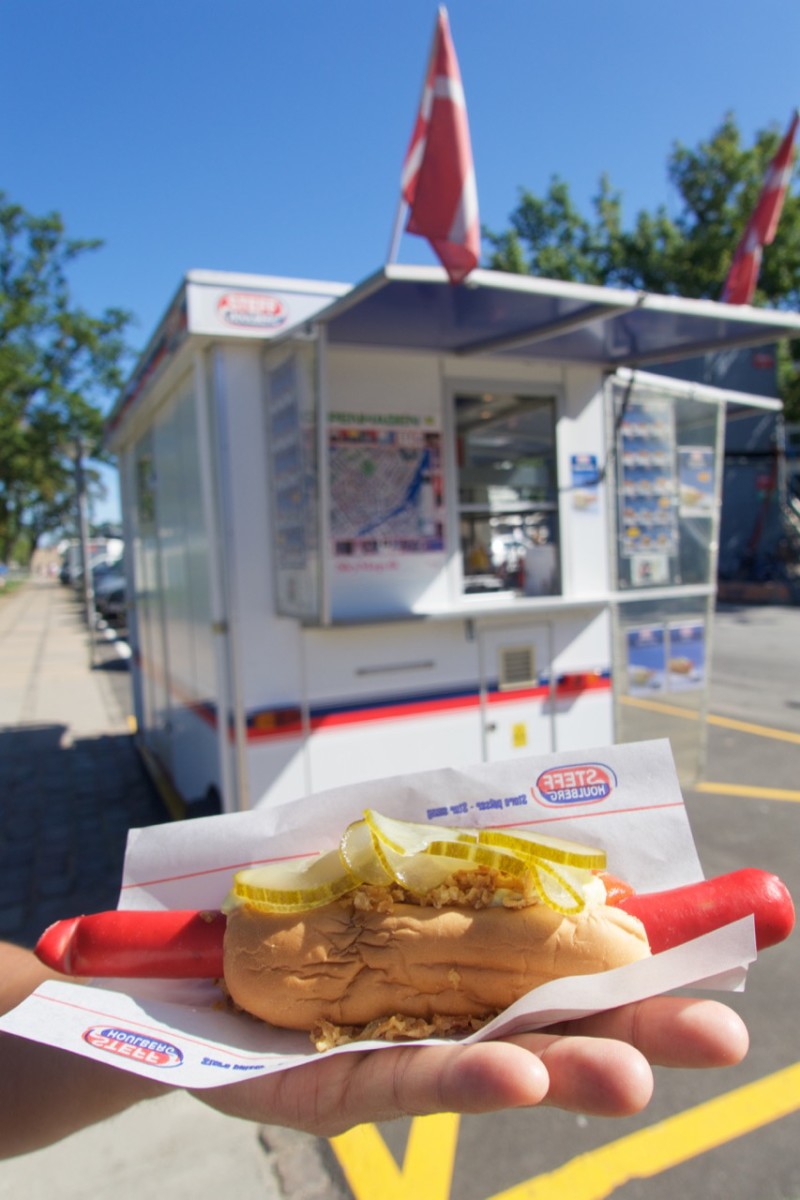
Danish Culture
Our friends explained to us that Danish folks tend to stay within their own bubbles in public. They may not offer help to a stranger, but they’re usually happy to provide it if asked.
“Hyggelig” is a Danish word that refers to their ideal sense of well-being, most closely translated to “cozy” and related to a feeling of contentment. More than ambition, success, or thrill, the Danish strive for hyggelig (pronounced like HUE guh lihg).
We’ve been told that most people are very content in Denmark. It’s ranked happiest country on Earth- which is a good thing, of course, to live without much stress and to be happy with what you have. The downside is that people may not be motivated to stand up for changes that need to be made.
Cost of Living in Denmark
Things are expensive in Copenhagen, with Value Added Tax (like a sales tax) coming in at a whopping 25%. The Danish pay a lot of other taxes as well.
But in exchange, Danes don’t really have to worry about healthcare costs, vacation days (five weeks per year is the minimum), pensions… They get paid a generous maternity and paternity leave, higher ed is free and includes a living stipend, and Danes benefit from a lot of other social services that take the burden off individuals and families.
To give just a general sense of the costs, a one-ride ticket on the Metro in Copenhagen is equivalent to $5.50 US. A 12oz smoothie from a cafe would be around $7.
Danish Language
This would be a tough language to learn! Apparently only 6 million people speak it – which is essentially the population of Denmark, plus 15-20% of Greenland and pockets of other emigrants around the globe.
We learned that the Danish language is Germanic (so if you know German, that could help you decipher a few words). It has a few extra letters, 27 different vowel sounds, and some letters are (sometimes) silent. Confused yet?
As an example, we were surprised to learn that the name of the suburb we stayed in with our friends,“Herlev,” is pronounced something like: hah-lyoo.
Fortunately, many Danes understand and speak English or we’d be in trouble!
Copenhagen Sights
While not the most beautiful city in Europe, Copenhagen has a certain sensibility of its own. When googling Copenhagen, you’ll mostly find images from this one particular, colorful canal-lined street.
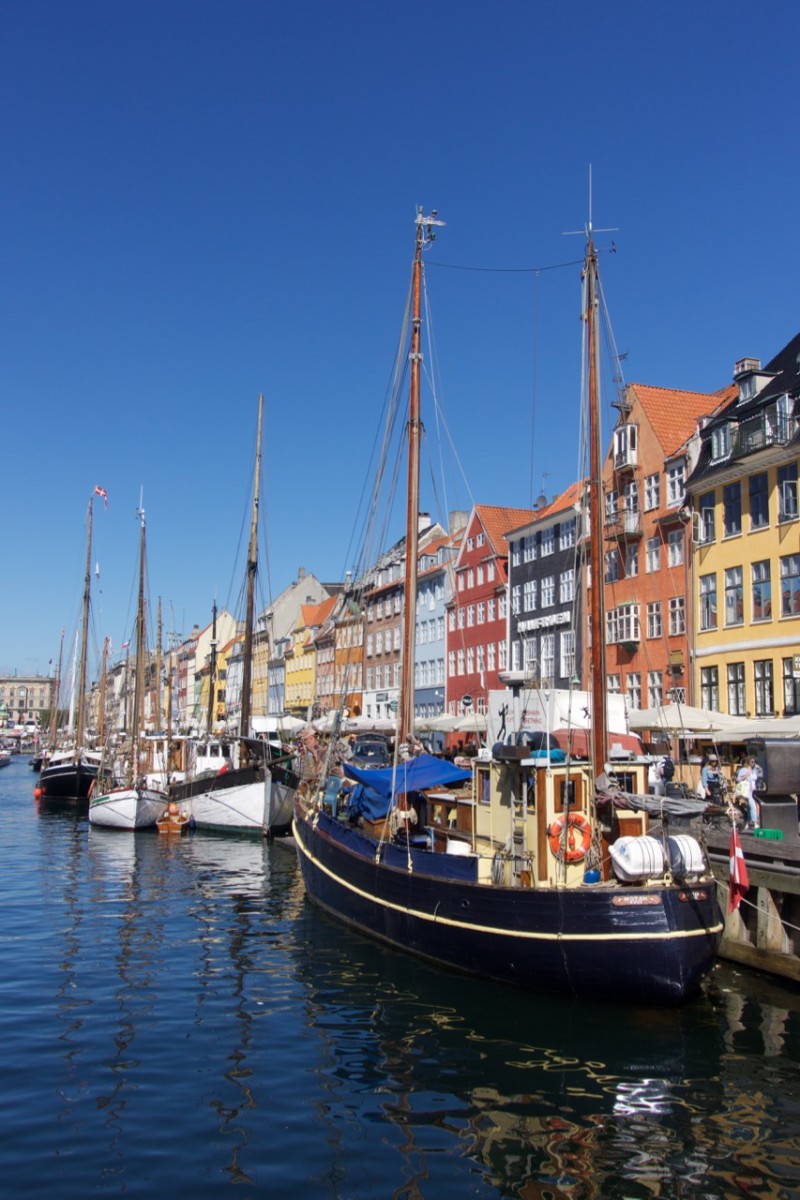
Unlike Bruges or Amsterdam – where we had just come from – this one picture is not representative of the rest of the city, which takes on a wide variety of different looks. When walking around, you’ll find different pockets of town that are especially nice and you’ll come across lovely parks and plazas here and there. But they’re mixed in with somewhat mundane areas as well.
I’m glad we saw Copenhagen in summer. Of course, you can visit all year round, experiencing different things with each season.
Places to Visit in Copenhagen
Den lille Havfrue (The Little Mermaid) – It’s a statue of a mermaid on a rock in the water. There are plenty of tourists coming in by the bus load.
Nearby is the Kastellet, a preserved pentagon-shaped fortification, now home to the Danish Defense Intelligence Service. We were shocked to learn that you can walk around this place AND take pictures! (Just don’t walk on the lawn.) It’s essentially a park – and a very cool one at that.
Amalienborg Palace is the winter home of the Danish royal family. There are actually four separate, identical palaces on the square, each belonging to different members of the royal family. Changing of the guard takes place at noon. We were told that if a flag was raised above one of the buildings, that meant someone was home.
Nyhavn canal is the colorful place you see in all the pictures. Definitely picturesque! And you can see the opera house across the water.
Reffen is a waterfront plot full of food carts, beverage stalls, skateboarding ramps and entertainment like DJs and BINGO. You can find food from a wide variety of cultures and though it’s not cheap, it’s definitely a cool place to experience. It’s located on Copenhagen Harbor and easily reached by bike, bus or the harbor ferry.
Freetown Christiania is a self-governed, autonomous community within Copenhagen. Apparently it started with squatters back in the 70s and is now home to some 850 residents who are committed to the wellbeing of the entire community. It was a fascinating place to walk around, and notably the first place since leaving Peace Corps Jamaica where we’ve heard somebody use a Jamaican cuss word!
Tivoli Gardens is the second oldest amusement park in the world and it’s full of old-world charm. The first oldest amusement park is also in Denmark, not too far from Copenhagen. Tivoli Gardens opened in 1843 and the site inspired Walt Disney to build his own amusement park after he visited Copenhagen. Visit the impressive gardens, enjoy the rides and try some of the local food stands when you visit the city.
Frederiksberg Have is a large city park which is home to the zoo. You can actually see the elephants from the park without entering the zoo grounds. There are two more parks right next to Frederiksberg as well.
Rosenborg Palace is a Renaissance castle located in Copenhagen’s city center. It was built in 1606 as a summer palace for the king and today it’s a museum of Danish royal history. Inside the castle, each room is outfitted with relics of various stages of Denmark’s history. These relics include the Danish crown jewels and coronation thrones. Once you tour the castle, take a walk around the surrounding gardens, Kongens Have. They’re known as the King’s Gardens and are the most visited park in Copenhagen.
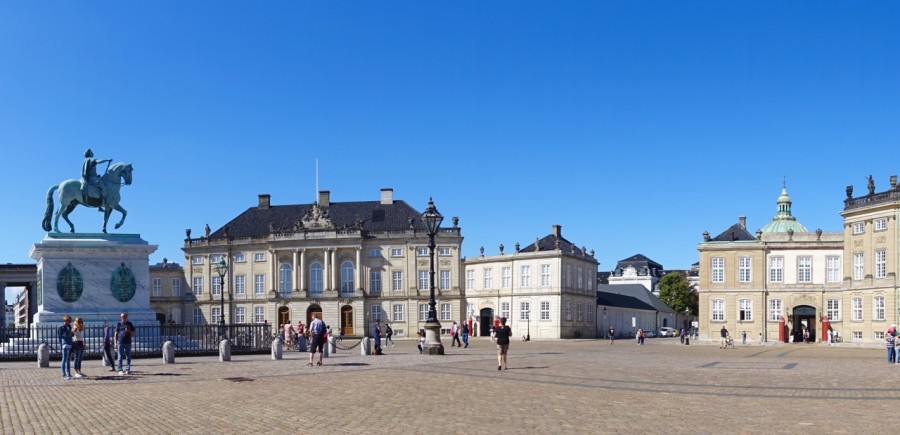
Where To Stay In Copenhagen
Copenhagen is a very compact city that is walkable and has a great public transportation system and network of bike lanes. Because it’s so easy to get around, the attractions of Copenhagen are easily reached from all areas of the city and surrounding region. Still, there are three pockets of the city that are perfect for your stay, have lodging to fit any budget and place you close to the main attractions.
City Hall Area
Around Copenhagen City Hall you’ll find many hotels. They include budget options like CPH Downtown Hostel and some of the best boutique hotels in Copenhagen like Hotel Danmark and SP34.
In this area you’re a short walk to Copenhagen Central Station and the city ring, Copenhagen’s newest metro line. It’s also close to Strøget, the pedestrian shopping street that stretches across the city center. This area is full of great restaurants and popular nightlife spots in the city.
Check rates and availability of CPH Downtown Hostel >
Check rates and availability for Hotel Danmark >
Check rates and availability for Hotel SP34 >
Kongens Nytorv
A quieter option for Copenhagen hotels is the Kongens Nytorv Area. It’s close to Nyhavn, Copenhagen’s iconic harbor and one of the most picturesque areas of the city. There are plenty of restaurants in this area, but it tends to be a little pricey because it is so popular with tourists.
You can compare hotels to find one with views of the harbor or canals like The Strand Hotel or Hotel Admiral. The area is also linked to every metro line at the Kongens Nytorv metro station.
Check rates and availability for The Strand Hotel >
Check rates and availability for Hotel Admiral >
Vesterbro
Vesterbro is a hip neighborhood in Copenhagen that was once the red light district. It’s made a turn-around but has kept some of the grit and charm from its past. Many of the city’s best restaurants are in the adjacent Meatpacking District and it’s a short walk to central station, Tivoli Gardens and other popular attractions. This neighborhood has a lot of hotels and more budget-friendly options than other areas of the city center.
Denmark landscapes
Being such a small country (which is essentially a peninsula sitting on top of Germany plus a bunch of islands), Denmark is roughly one fifth the size of Oregon. It seemed that wherever we went, we were never to far from farmland or the water, which is pretty awesome.
At the end of our time in Denmark, we got to experience country life on one of the islands. We loved the slow pace and sense of peace – or as the Danish might called it: hyggelig.
✈️ Protect your Copenhagen and Denmark trip with Travel Insurance – We’ve started using Nomad Insurance by Safety Wing for affordable evacuation, international medical, and trip coverage.
We’re curious: what are your impressions of Denmark? Have you been? Do you want to go? Did any of the things we’ve learned surprise you? Let us know in the comments!
Like this post? Pin it for later or share with friends!

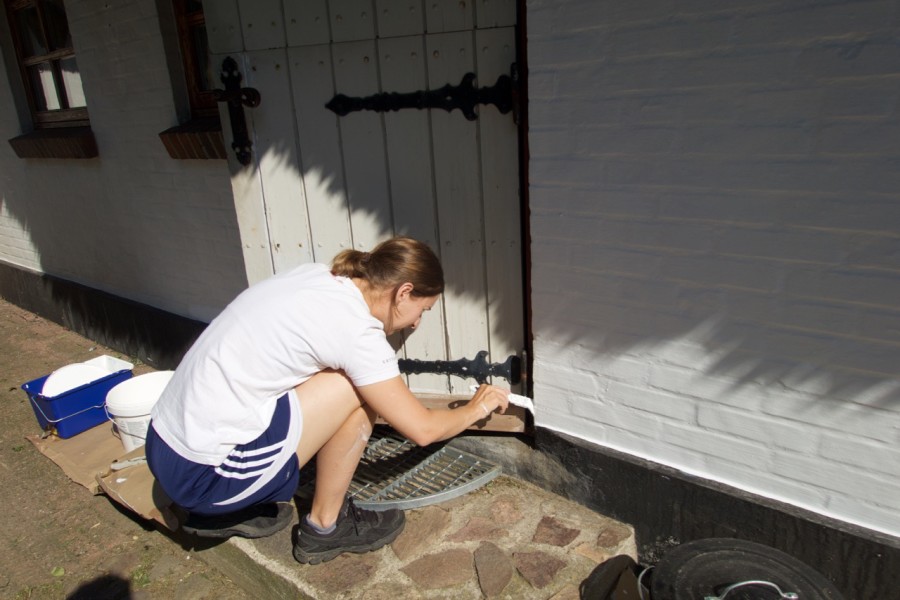
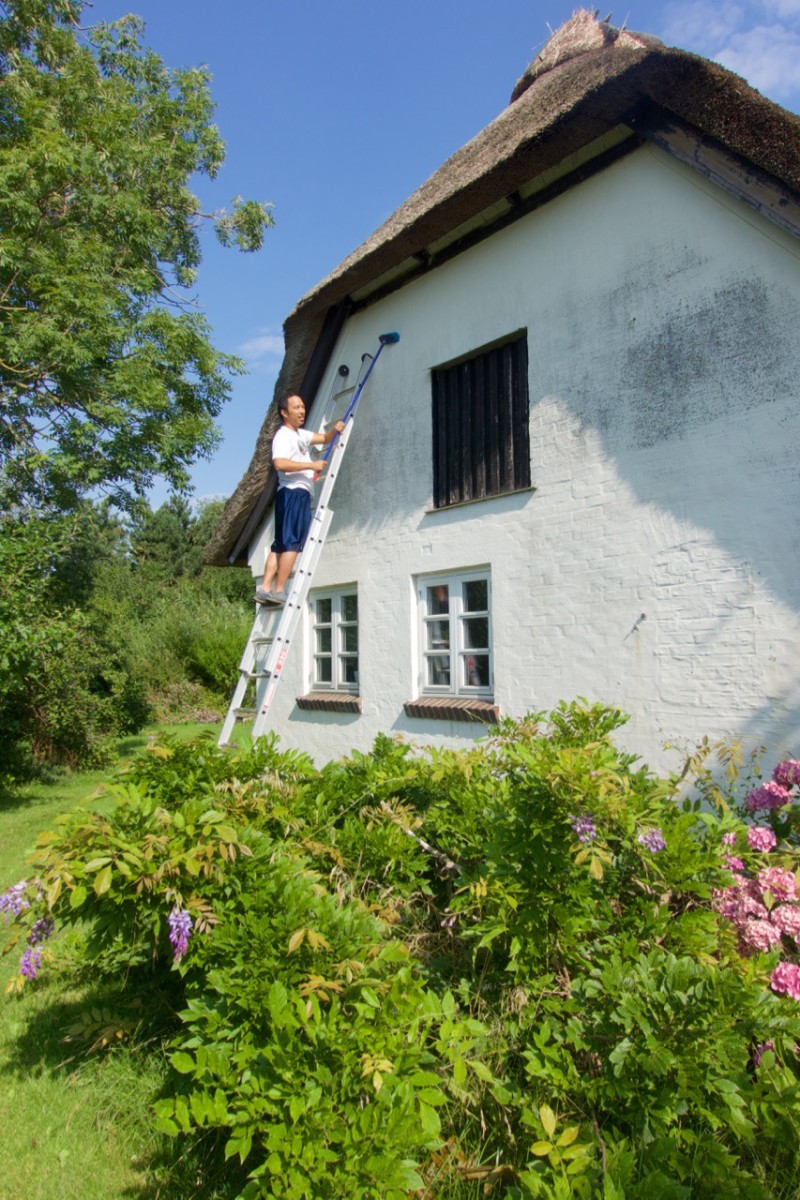
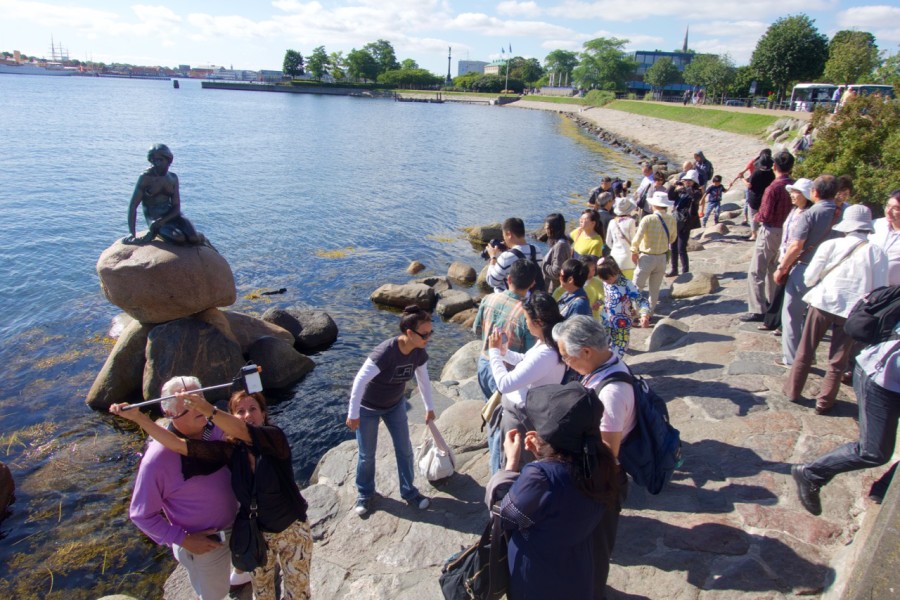
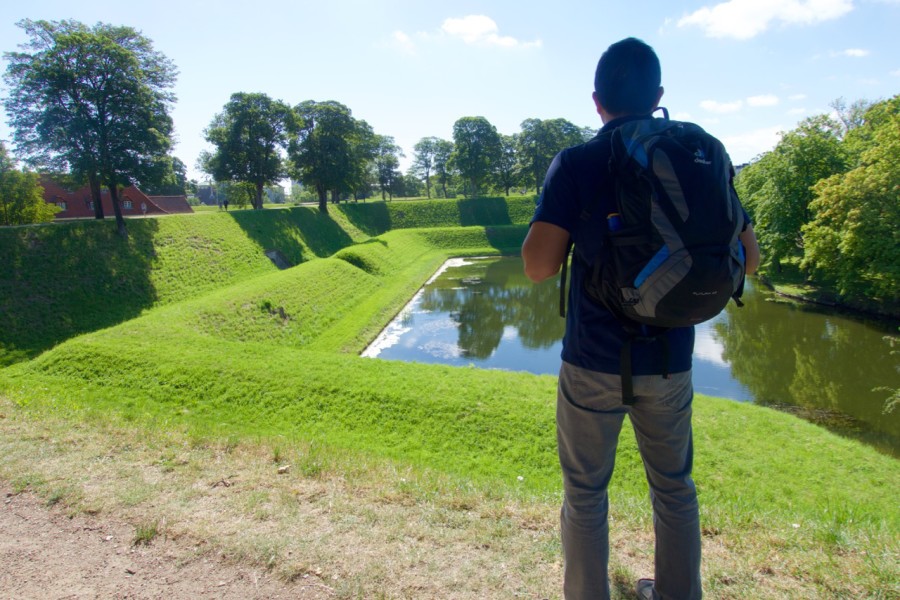
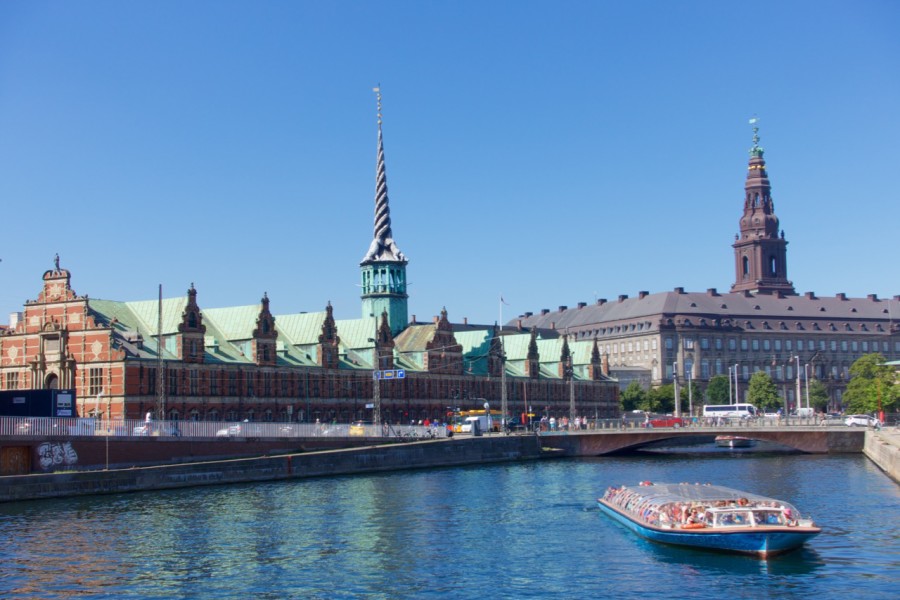

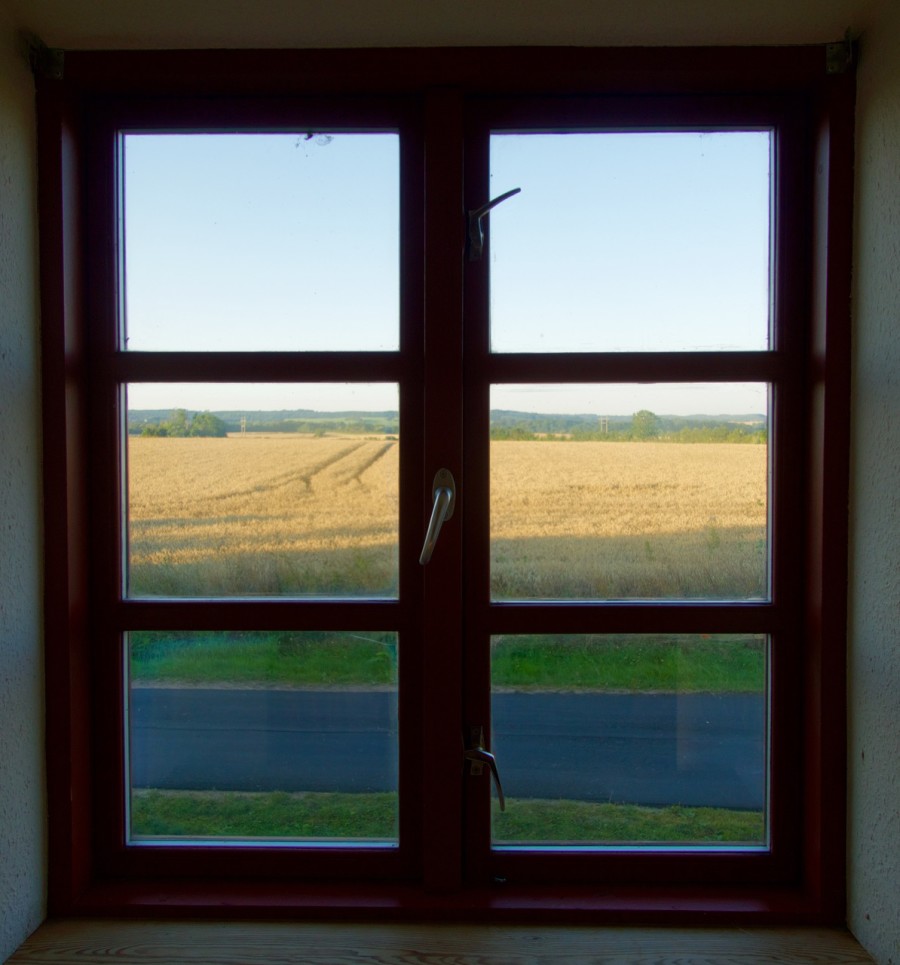

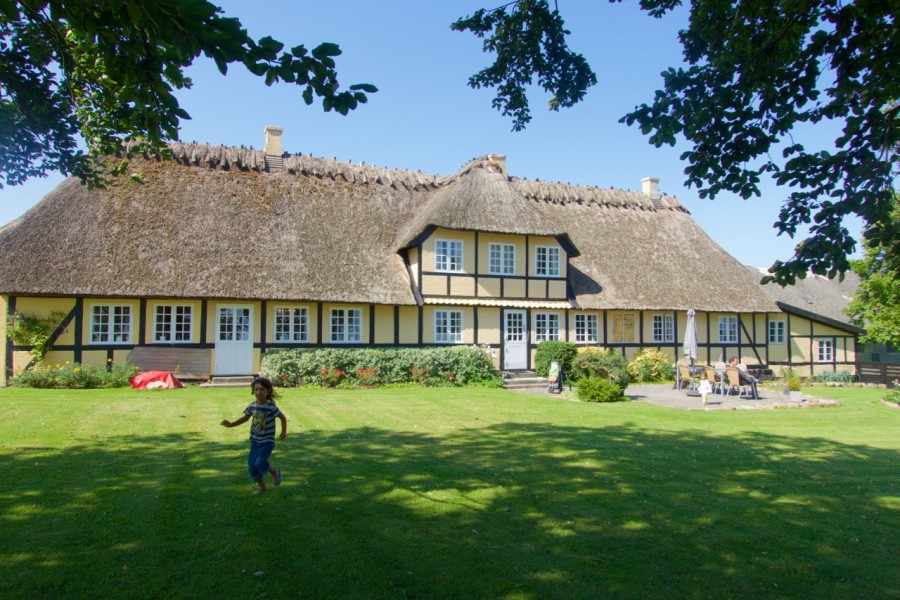
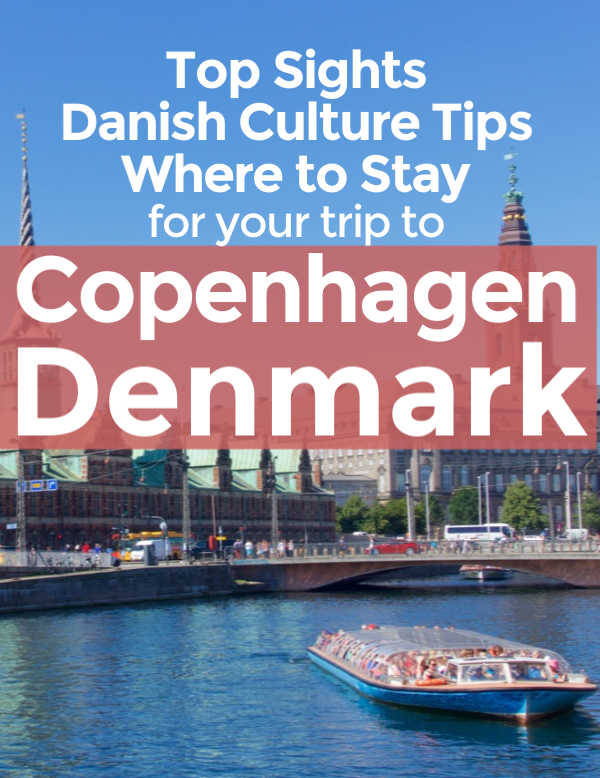

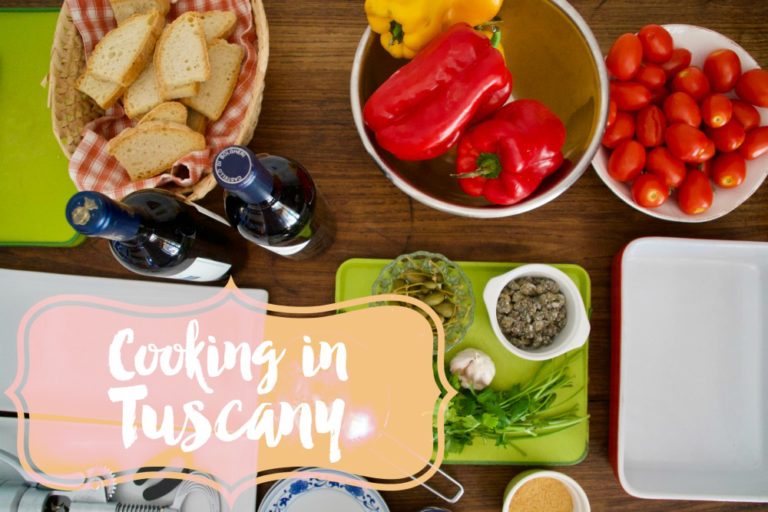


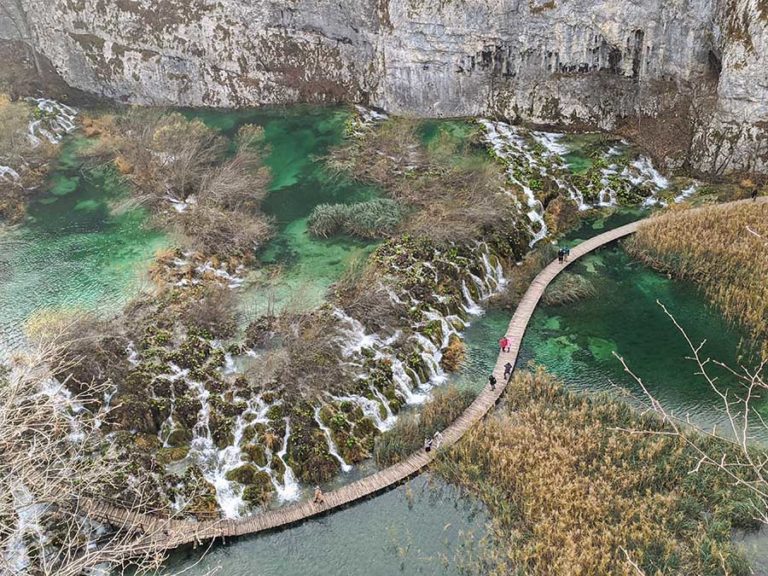
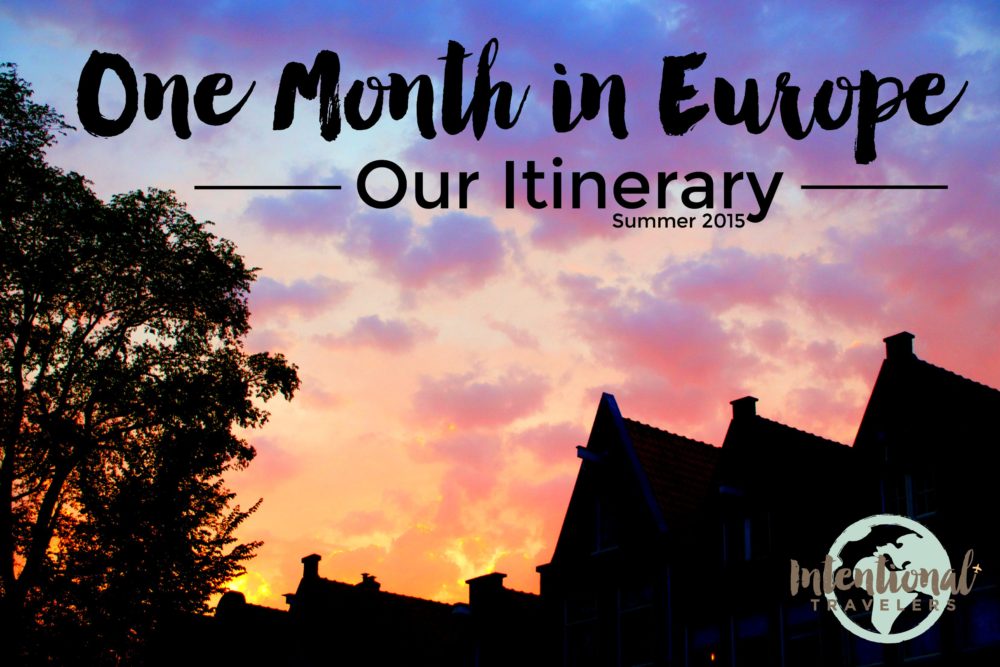
My first experience in Denmark was with my Germany host family, when we rented a cabin on the beach for a week. I remember eating licorice ice cream bars (I think the coating was licorice?) and bright pink Danish hot dogs. Flying kites on the beach reminded me of being at the Oregon coast. It was often windy and rainy but we had so much fun!
Thanks for adding your post to the August #MyGlobalLife Link-Up!
Well, I’ve been to Denmark and spent a long time in Copenhagen working on book project with a designer who lives there.
First off, I didn’t see you mention that visitors can have their VAT returned to them upon departure. Even VAT charged to your coffee can be returned.
Freetown Christiania is very controversial with many Danes. While some creative people do live there, many see it as a drug haven and a hiding place for people running from the law. Tivoli Gardens seemed a little done at the heels to me, but I was raised in California. We had Disneyland.
All is not negative. Never is. I really liked Louisiana, which is an amazing art museum located just outside of Copenhagen. I liked walking to work every morning. Mostly, I enjoyed the people who were always friendly and kind to me.
Hi Ray. Thanks for the great feedback from your experience in Copenhagen. We did not know that VAT could be returned to visitors! We had also heard great things about Louisiana but didn’t get a chance to make it out there. Thanks for sharing!
I too, know nothing about Denmark, thank you! Great perspective I commend how you openly admit you just don’t know. You guys still manage to stay on top of great content while traveling – bravo! Safe Travels!